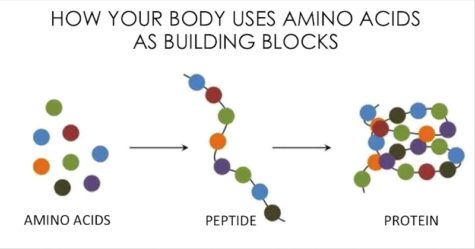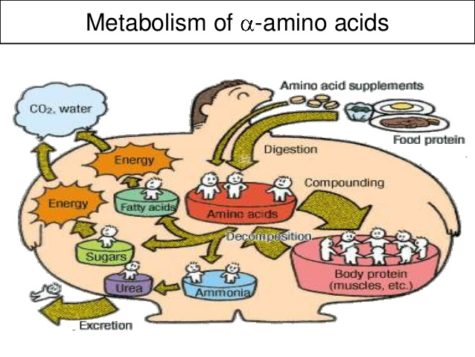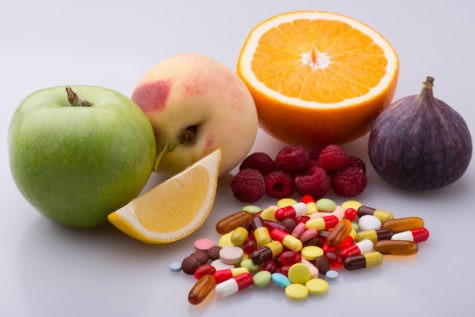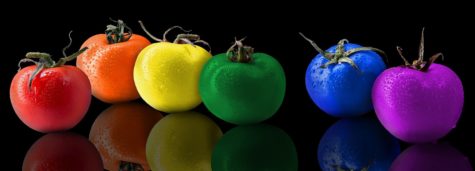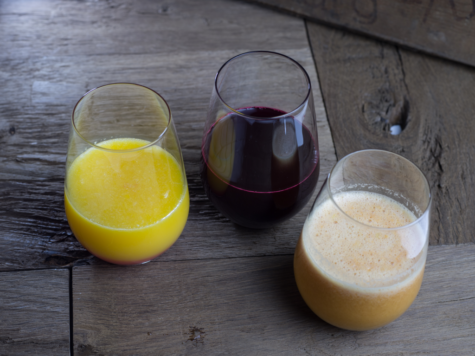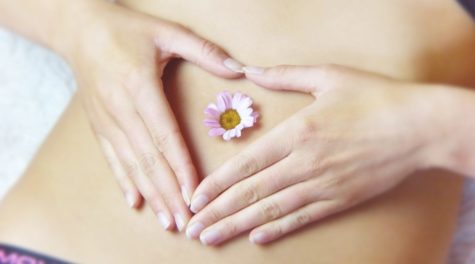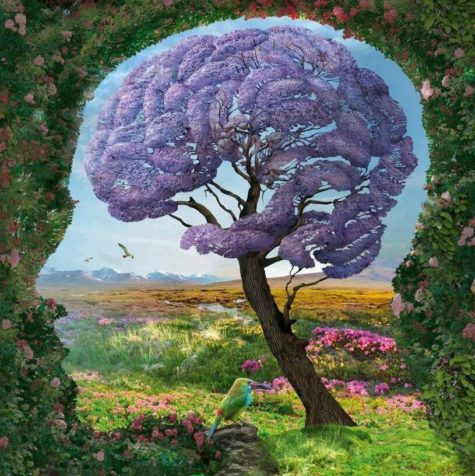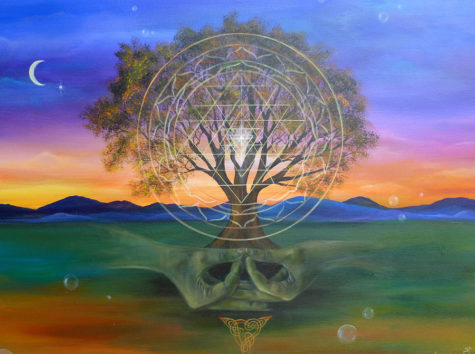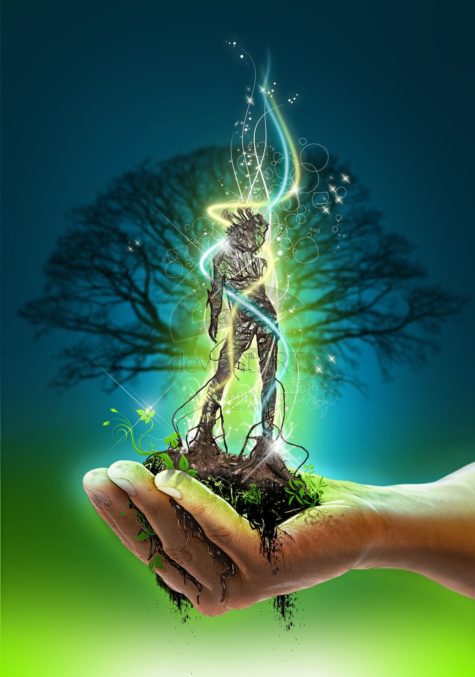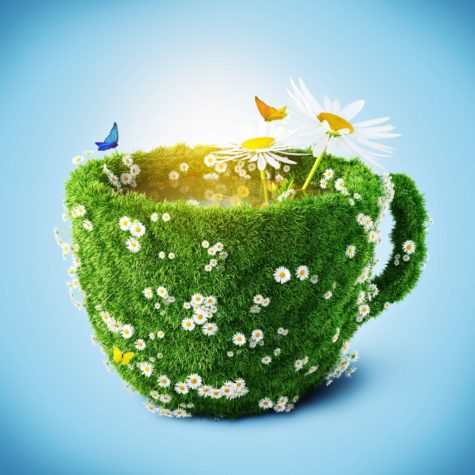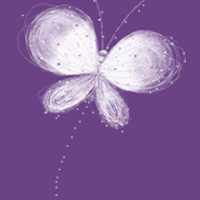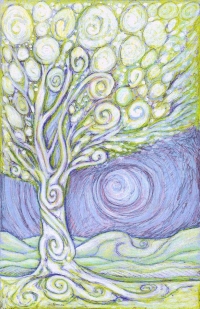Diet
SunGazing

SunGazing was a popular practice in ancient times. Mayans, ancient Egyptians, Indians and many other ancient cultures strongly believed in the power of Sun. They believed that it could heal diseases, put an end the need of food, and even make telepathy a real possibility.
The practice of SunGazing closely resembles its name. At sunrise and/or sunset, when the sun is closest to the earth, SunGazers stand barefoot on the earth and look directly at the sun for 10 seconds. Every day, 10 seconds are added and some SunGazers eventually reach a duration of 44 minutes.
The theory is that the sun is the force of all life, and staring at it can infuse the body with large amounts of energy. So much so that, Hira Ratan Manek, one of the SunGazers featured in the documentary, Eat the Sun, claims to have gone eight years without eating. He has been “eating” a steady diet of solar rays, and claims that this is all he needs for nourishment.
It may sound like a myth, but some scientists, have acknowledged the power of SunGazing. Nikola Tesla once talked about these super human abilities. He said,
‘My idea is that the development of life must lead to forms of existence that will be possible without nourishment and which will not be shackled by consequent limitations. Why should a living being not be able to obtain all the energy it needs for the performance of its life functions from the environment, instead of through consumption of food, and transforming, by a complicated process, the energy of chemical combinations into life-sustaining energy?’
Our ancestors understood the relation between the sun and health. From the Aztecs to the ancient Egyptians, many past societies revered SunGazing as an esoteric practice for high-ranking priests and shamans. Today, it is experiencing a resurgence in popularity and SunGazers claim it has its benefits.
The benefits of the practice are said to be as follows:
- It activates our pineal gland and boosts production of melatonin and serotonin which are also called feel-good hormones. The hormones are also supposed to be the reason behind the increased energy level.
- It is known to stimulate the growth of pineal gland. Generally pineal glands shrink with age, but with SunGazing, the result is otherwise.
- SunGazing provides nutrition to both mind and body which provides for our energy requirement. Hence, human can get rid of the need to eat food which promotes weight loss in a healthy way.
Sungazing is an interesting practice that touches the spiritual and psychological realms, which are very personal things. Everyone is wired a little differently and this practice isn’t for everyone, nor is it something I recommend. If you choose to partake, do your own research, be careful, be cautious, and document your experience.

Important Disclaimer:
The human eye is very sensitive, and prolonged exposure to direct sunlight can lead to solar retinopathy, pterygium,cataracts,and often blindness. Studies have shown that even when viewing a solar eclipse the eye can still be exposed to harmful levels of ultraviolet radiation.

SunGazing With Your Eyes Closed
The practice of SunGazing with your eyes closed is actually more powerful than SunGazing with your eyes open and can be done safely all day long. With them closed, the visible light spectrum is blocked but the other than visible light spectrum penetrates the cranium – x-rays, gamma rays, microwaves etc.
The after image which is present when you SunGaze or stare at a candle or light source, is actually the biophotons in your head illuminating. Biophotons are very healing – that is why they discredit that after image and refer to it like it is a mirage, and just to be ignored.
The biophotons react to other than visible light – the light that penetrates the cranium when your eyes are closed and you look at the sun. Biophotons will expand and fill the entire cranium and then the whole body, as you focus on the inner Light, that Light becomes more coherent.
The coherent light is a more potent healer than anything else we have on earth. Illness and disease cannot exist inside a coherent energy field. There are 13 different LIGHTS inside the head – corresponding to Jesus and the 12 disciples – these are the Light frequencies required to cleanse and purify the Pranic body – the 2nd body up – not to be confused with the aura – to accomplish ascension – the Jesus thing.

But Wait, There’s More!
I found another article about SunGazing that I thought was interesting and worth a look if this interests you. The article was written by Stasia Bliss for The Guardian Express (guardianlv.com):
NASA Confirms -Super Human Abilities Gained Through Sungazing
Ever wanted to be in more than one place at a time? That’s right, I’m talking about the super-human abilities that can be gained by those who follow the protocol for what’s known as sun-gazing, a valid practice recently confirmed by NASA.
Many proponents of this ancient technique, used by many cultures such as Mayan, Egyptian, Aztec, Tibetan and Indian yoga, report not only healing benefits to common illnesses, but obtaining super-human abilities such as advanced telepathy and going completely without the need for food.
Another Disclaimer: Do not engage in sungazing practices without proper training and medical supervision. Permanent eye injury and blindness may occur. Do not attempt to change your diet and live on sunlight or water alone. Before attempting any radical spiritual or dietary practice, seek qualified medical advice and spiritual supervision.
What is Sun Gazing?
Sun gazing (also known as sun-eating) is a strict practice of gradually introducing sunlight into your eyes at the lowest ultraviolet-index times of day – sunrise and sunset. Those who teach the practice say there are several rules to the practice. First, it must be done within the hour after sunrise or before sunset to avoid damaging the eyes. It is important to only look at the sun when it is orange or red according to the ancients. Looking at the sun when it is yellow or white, or uncomfortable in any way is not recommended.
Second, you must be barefoot, in contact with the actual earth – sand, dirt or mud; and finally, you must begin with only 10 seconds the first day, increasing by 10 second intervals each day you practice. Following these rules make the practice safe, says sources.
Nikolai Dolgoruky of the Ukraine calls himself a ‘sun-eater’. He has been practicing sun gazing for the past 12 years and has largely subsisted off solar energy since he began. Others have reported losing the need for food after only 9 months of sun gazing (by which time the practitioner has worked up to a maximum of 44 minutes).
After 9 months of practice, you need only walk barefoot on the earth for 45 minutes per day, 6 days in a row to further the process of what has been initiated by sun gazing.
Sun-gazing is a practice also called the HRM phenomenom, coined as such after Hira Ratan Manek, the man who submitted himself to NASA for scientific testing to confirm that he does indeed possess the almost ‘super-human’ ability of not eating, gained through his dedication to this interesting marvel.
Funded by NASA, a team of medical doctors at the University of Pennsylvania observed Hira 24 hours a day, 7 days a week for 100 days. NASA confirmed that he was indeed able to survive largely on light with occasionally a small amount of buttermilk or water during this time.
What happens to the body during Sun Gazing?
During your first 3 months of practice, the suns energy is moving through the eyes and charging the hypothalamus tract, says those who have studied this technique and used it. This Science/Medical Team wanted to observe and examine his retina, pineal gland and brain, therefore this observation team was led by Dr. Andrew B. Newberg, a leading authority on the brain and also featured in the recent movie “What the Bleep Do We Know”, and by Dr. George C. Brenard, the leading authority on the pineal gland.
Initial results found that the gray cells in HRM’s brain are regenerating. 700 photographs have been taken where the neurons were reported to be active and not dying. Furthermore, the pineal gland was expanding and not shrinking which is typically what happens after mid fifties and its maximum average size is about 6 x 6 mm, however for HRM, it has been measured to be at 8 x 11 mm. The hypothalamus tract is the pathway to the rear of the retina which leads to the brain.
The brain then, over time, becomes activated by the energy supply being received by the sun. You will first experience a relief of mental tension and worry, since most worry is fueled by the energy received by the foods we eat. Since food gets it’s energy from the sun, it is said to be readily available to sun-eaters without the trouble of digestion. Though hunger is said to eventually cease, it is fine to continue eating regularly during initial stages, until appetite disappears naturally.
Another benefit early on is said to be an increase in confidence and an ability to easily solve your problems, as you are without tension. Everyone has at least a bit of psychosis, but during the first few months of sun gazing practice, it is reported that these attitudes go away and a positive nature gracefully replaces the old persona full of fears.
By the end of 3 months, the gazing time will have increased to 15 minutes per day.
Reports on sun gazing say that the bad qualities normally associated with any person will gradually disappear and good qualities will remain, explaining that ‘bad qualities’ only develop in the absence of sunlight. Bad qualities like anger, fear, jealousy, lust – are said to disappear – and be replaced by a certain confidence and ‘spiritual knowing’ that senses more purely the heart of an issue.
At 3-6 months of gazing, the studies show that physical diseases start to disappear.
They say that by the time one is gazing 30 minutes per day (building up 10 seconds per day) all the colors of the sun will have reached the brain. Color therapists attribute their healing of certain diseases to flooding the body and brain with the particular color that is lacking – depending on the ailment.
For example, in liver disease, the color green is deficient. The kidneys need red, and the heart, yellow. All of the organs and all of the systems are said to respond to different colors of the rainbow, which is why it is also recommended to eat a diet rich in a variety of colors. It is recommended during the 3-4 month period that you use autosuggestion to see your body already healed of any perceived weakness or disease.
This action will facilitate the process of returning to wholeness.
As you continue the process, it is reported that after 6 months, the energy stored from the technique is no longer being used for repairing the body or the mind and can move now into supporting you in gaining more super-human abilities.
How can we take in sunlight?
How can the body take in sunlight in such a manner as to sustain life? Is it possible that some of our dormant “junk” DNA may become active and allow us to utilize Solar Energetic Factors in the same way that plants do? Let us examine a possible method.
There is a pathway from the retina, to the hypothalamus, called the retino-hypothalamic tract. This brings information about the dark &light cycles to supra-chiasmatic nucleus (SCN) of the hypothalamus. From the SCN, impulses along the nerve travel via the pineal nerve (Sympathetic nervous system) to the pineal gland. These impulses inhibit the production of melatonin. When these impulses stop (at night or in dark, when the light no longer stimulates the hypothalamus) pineal inhibition ceases, and melatonin is released. The pineal gland is therefore a photosensitive organ and an important timekeeper for the human body.
The unexplored process of energy absorption, transformation, and processing from the Sun may occur here. The activation of pineal gland is a key step in psychic, spiritual and energy transformation processes. Suffice it to say that in this gland, energy processing and distribution can take place. The pineal gland is the subtle controller of all endocrine glands, therefore controlling the endocrine system. Through secretion of melatonin, it also regulates the circadian rhythm, sleep wake cycle and it also slows down aging process. It has psychic properties and it is said to be the seat of soul or mind.
Sunlight may enter the eyes and be directly stored in the pineal gland. Pineal activation and charging through solar energy could be a vital step in higher evolution. Once activated and charged by the Pineal gland, Solar Energetic factors may be transformed into electrical, magnetic or chemical energies in body. Once processed, this energy must be transported & must be stored somewhere. If the initial processing of this energy starts in the pineal gland, how does it get to the rest of the body?
What’s Beyond Healing?
By seven and a half months of gazing, now at 35 minutes, need and desire for food is dwindling. According to sun gazing experts, food is not actually needed to maintain the body, only energy – and ‘sun-eating’ provides that energy. By 9 months, all taste for food, including aroma, all hunger pains and cravings disappear. Those who make it this far say that they report a noticeable ’change’ in the way their brain feels – like it’s “charged up.” After 9 months of sun-gazing – reaching a maximum of 44 minutes – it is advised that you give up sun-gazing and redirect your attention now to the Earth.
For 6 days straight, one is to walk barefoot on the earth, 45 minutes per day.
During this barefoot walking, the pineal gland is said to become activated. Professional sun gazers and those researching the science say that each toe is connected to a specific gland, and by walking barefoot on the Earth, you activate these glands. The big toe is thought to be aligned with the pineal gland, the second toe with the pituitary, then the hypothalamus, thalamus and finally the pinky toe correlates to the amygdala. Walking barefoot, with the sun now falling on the top of your head, practitioners claim to create a sort of magnetic field in and around your body that recharges you and your brain.
Apparently this walking barefoot part is the most important aspect of the practice. As you continue walking on the Earth, this is when the magic really begins. The pineal gland is activated more and more by this walking procedure. Intellect is said to increase, along with memory. The pineal gland has navigational and psychic capabilities, meaning telepathy, the possibility of flight… now we are getting somewhere! Have you ever thought you would like to have your body in more than one place at a time? Well, sun-gazing is said to be the magical key to such abilities.
If you can barefoot walk 45 minutes every day for a year – you are golden. At that point, only a maintenance of 3-4 days a week is necessary to maintain the capabilities you have acquired.
Are there any dangers?
Doctors and eye care professionals caution against looking directly at the sun, saying that it will damage the retina. However, if done correctly, sun-gazing at the correct times of day, sunrise and sunset, studies show there is no risk of damaging the eyes.
Those who have been sun gazing for many years have had their eyes checked to show no damage, though it is advised that you have your eyes checked in the first few weeks of your practice, so you can know for yourself.
To sum it all up…
Remember, it’s 10 seconds the first day, at sunrise or sunset, adding 10 seconds per day each day there after. After 90 days of accumulative gazing equaling 44 minutes, you cease the gazing and start the barefoot walking 45 minutes per day for 6 days. At this point, I could imagine, hey – if you made it this far, what’s a year of barefoot walking an hour per day to keep it all? You will have to try it out and see for yourself.
Sources:
Raw Juice Therapy
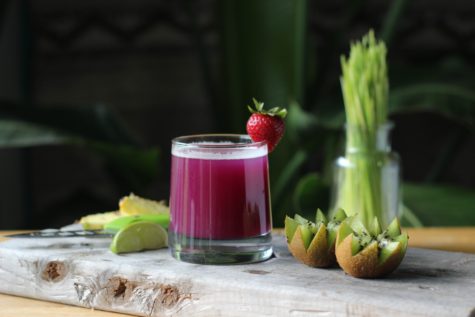
Raw juice therapy is a method of treatment of disease through an exclusive diet of juices of fruits and vegetables. It is also known as juice fasting. It is the most effective way to restore health and rejuvenate the body.
During raw juice therapy, the eliminative and cleansing capacity of the organs of elimination, namely lungs, liver, kidneys and the skin, is greatly increased and masses of accumulated metabolic waste and toxins are quickly eliminated. It affords a physiological rest to the digestive and assimilative organs.
After the juice fasting or raw juice therapy, the digestion of food and the utilization of nutrients is vastly improved. An exclusive diet of raw juices of fruits and vegetables results in much faster recovery from diseases and more effective cleansing and regeneration of the tissues than the fasting on pure water.
Dr. Ragnar Berg, a world-renowned authority on nutrition and biochemistry observes:
“During fasting the body burns up and excretes huge amounts of accumulated wastes. We can help this cleansing process by drinking alkaline juices instead of water while fasting.
I have supervised many fasts and made extensive examinations and tests of fasting patients, and I am convinced that drinking alkali-forming fruit and vegetable juices, instead of water, during fasting will increase the healing effect of fasting. Elimination of uric acid and other inorganic acids will be accelerated. And sugars in juices will strengthen the heart.
Juice fasting is, therefore, the best form of fasting. ”
As juices are extracted from plants and fruits, they process definite medicinal properties. Specific juices are beneficial in specific conditions. Besides specific medicinal virtues, raw fruit and vegetable juices have an extraordinary revitalizing and rejuvenative effect on all the organs, glands and functions of the body.
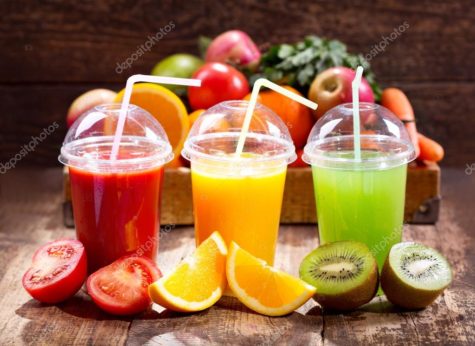
Favorable Effects
The favorable effect of raw juices in the treatment of disease is attributed to the following facts : Raw juices of fruits and vegetables are extremely rich in vitamins, minerals, trace elements, enzymes and natural sugars. They exercise beneficial effect in normalizing all the body functions. They supply needed elements for the body’s own healing activity and cell regeneration, thereby speeding the recovery.
- The juices extracted from raw fruits and vegetables require no digestion and almost all their vital nutrients are assimilated directly in the bloodstream.
- Raw juices are extremely rich in alkaline elements. This is highly beneficial in normalizing acid-alkaline balance in the blood and tissues as there is over-acidity in most conditions of ill-health.
- Generous amounts of easily assimilable organic minerals in raw juices especially calcium, potassium and silicon help in restoring biochemical and mineral balance in the tissues and cells, thereby preventing premature ageing of cells and disease.
- Raw juices contain certain natural medicines, vegetal hormones and antibiotics. For instance, string beans are said to contain insulin-like substance. Certain hormones needed by the pancreas to produce insulin are present in cucumber and onion juices. Fresh juices of garlic , onions, radish and tomatoes contain antibiotic substances.

Precautions
Certain precautions are, however, necessary in adopting an exclusive diet of raw juices. Firstly, all juices should be made fresh immediately before drinking. Canned and frozen juices should not be used. It will be advisable that one should have one’s own juicer for extracting fresh juices.
Secondly, only fresh ripe fruits and vegetables, preferably organically grown, should be used for extraction of juices.
Thirdly, only as much juice as needed for immediate consumption should be extracted. Raw juices oxidize rapidly and lose their medicinal value in storage, even under refrigeration.
Fourthly, the quality of the juices has a distinct bearing on the results obtained. In case of incomplete extraction of juices, their effective power is proportionately reduced due to the absence of the vitamins and enzymes which are left behind in fiber and the pulp.
Finally, if juices are too sweat they should be diluted in water on 50 : 50 basis or mixed with other less sweet juices. This is especially important in some specific conditions such as diabetes, hypoglycemia, arthritis and high blood pressure.
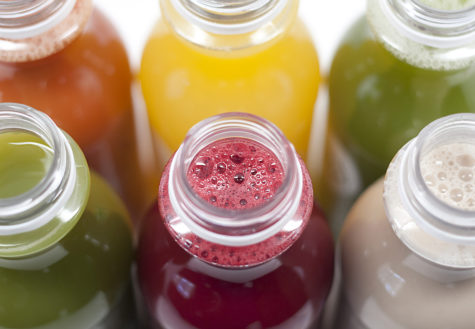
The Six Main Types of Juices
Fruit and vegetable juices may be divided into six main types. These are :
- Juices from sweet fruits such as prunes and grapes
- Juices from sub-acid fruits like apple, plum, pear, peach, apricot and cherry
- Juices from acid fruits like orange, lemon, grapefruit, strawberry and pineapple
- Juices from vegetable fruits, namely, tomato and cucumber
- Juices from green leafy vegetables like cabbage, celery, lettuce, spinach, parsley and watercress
- Juices from root vegetables like beetroot, carrot, onion, potato and radish. Generally speaking, fruit juices stir up toxins and acids in the body, thereby stimulating the eliminative processes.
Vegetable juices, on the other hand, soothe the jaded nerves and work in a much milder manner. They carry away toxic matter in a gentle way. Owing to their differing actions fruit and vegetable juices should not be used at the same time or mixed together. It is desirable to use juices individually. In any case not more than three juices should be used in any one mixture.
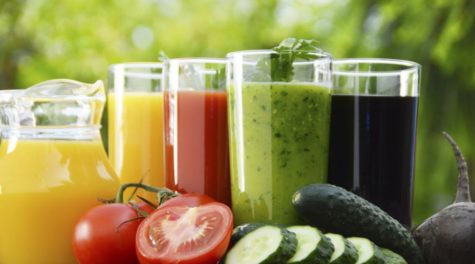
Rules For Mixing Juices
The following broad rules apply when using mixtures of juices. Juices from sweet fruits may be combined with juices of sub-acid fruits, but not with those of acid fruits, vegetable fruits or vegetables.
- Juices from sub-acid fruits may be combined with juices of sweet fruits, or acid fruits, but not with other juices.
- Juices from acid fruits may be combined with those of sub-acid fruits or vegetable fruits, but not with other juices.
- Juices from vegetable fruits may be combined with those of acid fruits or of green leafy vegetables, but not with other juices.
- Juices from green leafy vegetables may be combined with those of vegetable fruits or of the root vegetable, but not with other juices.
- Juices from root vegetables may be combined with those of green leafy vegetables, but not with other juices. A proper selection of juices in treating a particular ailment is very essential.
Thus, for instance, juices of carrot, cucumber, cabbage and other vegetables are very valuable in asthma, arthritis and skin disease, but juices of orange and mosambi aggravate their symptoms by increasing the amount of mucus.
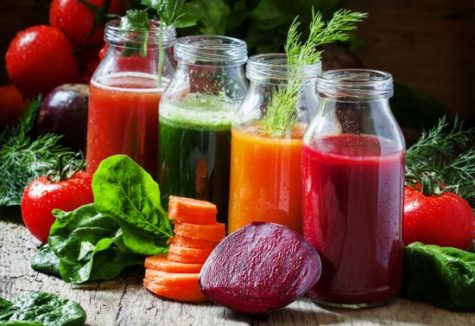
Treatment of Diseases
Some common ailments and fruit and vegetable juices found beneficial in their treatment are mentioned below :
- Acidity : Grapes, orange, mosambi, carrot and spinach.
- Acne : Grapes, pear, plum, tomato, cucumber, carrot, potato and spinach.
- Allergies : Apricot, grapes, carrot, beet and spinach.
- Arteriosclerosis : Grapefruit, pineapple, lemon, celery, carrot, lettuce, and spinach.
- Anemia : Apricot, prune, strawberry, red grape, beet, celery, carrot and spinach.
- Arthritis : Sour cherry, pineapple, sour apple, lemon, grapefruit, cucumber, beet, carrot, lettuce and spinach.
- Asthma : Apricot, lemon, pineapple, peach, carrot, radish and celery.
- Bronchitis : Apricot, lemon, pineapple, peach, tomato, carrot, onion and spinach.
- Bladder Ailments : Apple, apricot, lemon, cucumber, carrot, celery, parsley and watercress.
- Colds : Lemon, orange, grapefruit, pineapple, carrot, onion, celery and spinach.
- Constipation : Apple, pear, grapes, lemon, carrot, beet, spinach and watercress.
- Colitis : Apple, apricot, pear, peach, pineapple, papaya, carrot, beet, cucumber and spinach.
- Diabetes : Citrus fruits, carrot, celery, lettuce and spinach.
- Diarrhea : Papaya, lemon, pineapple, carrot and celery.
- Eczema : Red grapes,carrot, spinach, cucumber and beet.
- Epilepsy : Red grapes, figs, carrot, celery and spinach.
- Eye Disorders : Apricot ,tomato, carrot, celery, parsley and spinach.
- Gout : Red sour cherries, pineapple, tomato, cucumber, beet, carrot, celery and spinach.
- Halitosis : Apple, grapefruit, lemon, pineapple, tomato, carrot, celery and spinach.
- Headache : Grapes, lemon, carrot, lettuce and spinach.
- Heart Disease : Red grapes, lemon, cucumber, carrot, beet and spinach.
- High blood pressure : Grapes, orange, cucumber, carrot and beet.
- Influenza : Apricot, orange, lemon , grapefruit, pineapple, carrot, onion and spinach.
- Insomnia : Apple, grapes, lemon, lettuce , carrot and celery.
- Jaundice : Lemon, grapes, pear, carrot, celery, spinach, beet and cucumber.
- Kidney Disorders : Apple, orange, lemon, cucumber, cucumber,carrot, celery, parsley and beet.
- Liver ailments : Lemon, papaya, grapes, carrot, tomato, beet and cucumber.
- Menstrual Disorders :Grapes, prunes, cherry, spinach, lettuce turnips and beet.
- Menopausal Symptoms : Fruits and Vegetables in season.
- Neuritis : Orange, pineapple, apple, carrot and beet.
- Obesity : Lemon, grapefruit, orange, cherry, pineapple, papaya, tomato, beet, cabbage, lettuce, spinach and carrot.
- Piles : Lemon, orange, papaya, pineapple, carrot, spinach, turnip and watercress.
- Prostate Troubles : All fruit juices in season, carrot, asparagus, lettuce and spinach.
- Psoriasis : Grapes, carrot, beet, and cucumber.
- Rheumatism : Grapes, orange, lemon, grapefruit, tomato, cucumber, beet, carrot and spinach.
- Stomach Ulcers : Apricot, grapes, cabbage and carrot.
- Sinus Trouble : Apricot, lemon, tomato, carrot, onion and radish.
- Sore Throat : Apricot, grapes, lemon, pineapple, prune, tomato, carrot and parsley.
- Tonsillitis : Apricot, lemon, orange, grapefruit, pineapple, carrot, spinach and radish.
- Varicose Veins : Grapes, orange, plum, tomato, beetroot carrot and watercress.
When on a raw juice therapy, the prescribed juice should be drunk every three hours. One can thus take juices five to six times a day. A glass of water mixed with lemon juice and 20 to 30 grams of honey may be taken first thing in the morning on arising. Thereafter, the prescribed juice may be taken at three-hourly intervals.
The quantity of juice on each occasion may be 250 ml on the first day. This quantity may be increased by 50 ml each succeeding day till one takes 600 ml on each occasion. The juice diet can be continued for 30 to 40 days without any ill-effects.
The patient should take adequate rest during the raw juice therapy. Raw juices act as a cleansing agent and start eliminating toxins and morbid matter from the system immediately. This often results in symptoms such as pain in the abdomen, diarrhea, loss of weight, headache, fever, weakness, sleeplessness and bad breath.
These reactions, which are part of the cleansing process, should not be suppressed by the use of drugs. They will cease when the body is able to expel all toxins. After the raw juice therapy, the return to normal balanced diet should be gradual, and in stages. In the beginning, two juice meals may be replaced by milk and fruits. Then gradually juice meals may be substituted by a balanced-diet.
The Amazing Power of Amino Acids
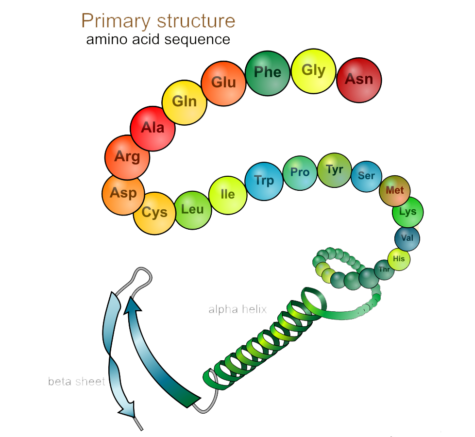 In 1838, a Dutch chemist, G.J. Mulder, described a certain organic material as “unquestionably the most important of all known substances in the organic kingdom. Without it, no life appears possible on our planet. Through its means the chief phenomena of life are produced. ” This complex nitrogen-bearing substance was called protein from the Greek word meaning ” take the first place.”
In 1838, a Dutch chemist, G.J. Mulder, described a certain organic material as “unquestionably the most important of all known substances in the organic kingdom. Without it, no life appears possible on our planet. Through its means the chief phenomena of life are produced. ” This complex nitrogen-bearing substance was called protein from the Greek word meaning ” take the first place.”
Protein is now a group name signifying the principal nitrogenous constituents of the protoplasm of all plant and animal tissues. Proteins are extremely complex organic compounds of the elements carbon, hydrogen, oxygen, nitrogen, and,with some exceptions, sulfur. Most proteins also contain phosphorous, and some specialized proteins contain iron, iodine, copper and other inorganic elements.
The presence of nitrogen distinguishes proteins from carbohydrates and fats. Proteins are thus vital substances, which form important constituent of muscles, tissues, and the blood. Proteins supply the building material for the body and make good the wear and tear of tissues. Several substances concerned with vital life processes such as enzymes, which help in digestion of food, are chiefly protein in nature.
There are several varieties of protein. Each type contains a specific number of “building blocks ” known as amino-acids. Before they can be absorbed by the body, all proteins must first be broken down into amino-acids. When food stuffs are ingested, the nutrients and amino-acids do not immediately diffuse into all the different tissues. There are a series of biochemical reactions in the digestive tract which collect these proteins, break them down and then utilize them as needed. Any interference with the normal digestive process causes in-complete protein digestion resulting in gas, bloating etc.
There are about 22 amino acids needed for the normal functioning of the body. The body can manufacture many amino acids if it has no adequate nitrogen source, but it cannot produce certain others in sufficient amounts to meet its needs. The amino acids that the body cannot synthesize in adequate amounts are called essential or indispensable because they must be supplied by the diet in proper proportions and amounts to meet the requirements for maintenance of growth. Non-essential or dispensable amino acids are those that the body can synthesize in sufficient amounts to meet its needs if the total amount of nitrogen supplied by protein is adequate.
Classification of Amino Acids with respect to their essentiality:
Essential Amino Acids
- Histidine*
- Isoleucine
- Leucine
- Lysine
- Methionine
- Phenylalanine
- Theronine
- Trypophan
- Valine
- Hydroxyproline
- Proline
- Serine
- Tyrosine
*Histidine is required for infants but its essentiality for adults has not been clearly established.
Nonessential Amino Acids
- Alanine
- Arginine
- Asparagine
- Aspartic acid
- Cysteine
- Cystine
- Glutamic acid
- Glutamine
- Glycine
It will be seen from this statement that nine amino acids are essential for maintenance of nitrogen equilibrium in human bodies. The estimated requirements of essential amino acids for infants, children and adults are given below. Men in the older age group appear to differ in their requirements. Studies seem to suggest an increase need for methionine and lysine for them. Infants and children have proportionally greater demands for essential amino acids than adults. In addition, infants require histidine as an essential amino acid.
Daily Requirements:
Estimating the daily requirement for the indispensable amino acids has proven to be difficult; these numbers have undergone considerable revision over the last 20 years. The following table lists the WHO and United States recommended daily amounts currently in use for essential amino acids in adult humans, together with their standard one-letter abbreviations.
| Amino acid(s) | WHO mg per kg body weight | WHO mg per 70 kg | US mg per kg body weight |
|---|---|---|---|
| H Histidine | 10 | 700 | 14 |
| I Isoleucine | 20 | 1400 | 19 |
| L Leucine | 39 | 2730 | 42 |
| K Lysine | 30 | 2100 | 38 |
| M Methionine+ C Cysteine | 10.4 + 4.1 (15 total) | 1050 total | 19 total |
| F Phenylalanine+ Y Tyrosine | 25 (total) | 1750 total | 33 total |
| T Threonine | 15 | 1050 | 20 |
| W Tryptophan | 4 | 280 | 5 |
| V Valine | 26 | 1820 | 24 |
The recommended daily intakes for children aged three years and older is 10% to 20% higher than adult levels and those for infants can be as much as 150% higher in the first year of life. Cysteine (or sulfur-containing amino acids), tyrosine (or aromatic amino acids), and arginine are always required by infants and growing children.
Factors in addition to the age, sex and physiological condition of an individual influence the requirements for specific amino acids. If total protein intake is low, small surpluses of certain amino acids can increase the need for others.
The non-essential amino acids in protein also affect the quality of protein. For example, the amount of sulphur – containing essential amino acid methionine required may be somewhat reduced if cystine, a sulfur-containing nonessential amino acid,is supplied in the diet. Likewise, the presence in the diet of tyrosine, a non-essential amino acid similar in structure to phenylalanine, may reduce the requirement for phenylalanine.
Much research has been done on amino acids in recent times and this has paved the way for dramatic treatment and cure of different problems by their judicious use. They are now dubbed as ” the nutrients of the 80’s” and “medical foods”.
The various functions of the essential and frequently investigated non-essential amino acids, their deficiency symptoms and their therapeutic uses are discussed below :
Tryptophan
Of all the essential amino acids , tryptophan is the one that is most investigated by nutrition researchers. It is essential to blood clotting, digestive juices and the optic system. It induces sleep and quietens the nervous system. It wards off signs of premature old age – cataracts of the eyes, baldness, deterioration of sex glands and malformation of teeth enamel. It is also necessary to the female reproductive organs and for proper utilization of vitamin A by the body.
Major sources of this amino acid are nuts, and most vegetables.
Lack of tryptophan causes symptoms similar to those of vitamin A deficiency. A number of scientists feel that it can be used as a safe and effective food remedy for insomnia and pain. Under experimental conditions, tryptophan in doses of one gram or more has been shown to be most effective for persons who suffer from mild insomnia and for those who take a long time to fall asleep.
Tryptophan may also be a natural painkiller. Researches at Temple University in Philadelphia have indicated that it worked without causing the side effects associated with other anesthesia or analgesics. Tryptophan as a food medicine should be taken between meals with a low protein food such as fruit juice or bread. One to three grams a day seems to be the range favored by most researchers.
Methionine
This is a vital sulphur -bearing compound which helps dissolve cholesterol and assimilates fat. It is required by haemoglobin, the pancreas , the lymph and the spleen. It is necessary to maintain normal body weight and also helps maintain the proper nitrogen balance in the body.
Rich sources of methionine are Brazil nut, Hazal nut, and other nuts. It is also found in brussel sprouts, cabbage, cauliflower, pineapples and apples. Its deficiency can lead to chronic rheumatic fever in children, hardening of the liver (cirrhosis) and nephritis of the kidneys. Studies show that methionine and chorine prevent tumours and proliferation.
Lysine
Lysine inhibits viruses. Its use along with vitamin C, zinc and vitamin A helps eliminate virus infections. Vitamin C protects this amino acid while in the body so that lysine plus vitamin C has a much stronger anti-virus effect than if either is used separately. Lysine also influences the female reproductive cycle.
Lack of adequate lysine in the diet may cause headaches, dizziness, nausea and incipient anemia. The main sources of this amino acid are most kinds of nuts, seeds, vegetables and sub-acid fruits. Lysine upsets in the body have also been associated with pneumonia, nephrosis and acidosis as well as malnutrition and rickets in children.
It is considered a natural remedy for cold, sores, shingles and genital herpes. In a study published in 1983, a group of researchers polled over 1,500 people whose daily intake of lysine was over 900 mg. 88 per cent said that lysine seemed to reduce the severity of their attacks of herpes virus and accelerated the healing time. These results have, however, been disputes by some scientists.
Valine
Valine is an essential body growth factor, particularly for mammary glands and ovaries. Valine is directly linked with the nervous system. It is essential for the prevention of nervous and digestive disorders.
Major sources are almonds, apples and most vegetables. Lack of this amino acid makes a person sensitive to touch and sound.
Isoleucine and Leucine
This amino acid is essential for maintaining the nitrogen balance vital to all body functions. It also regulates metabolism of the thymus, spleen and pituitary glands. Rich sources are sunflower seeds, all nuts, except cashew nuts, avocados and olives.
Leucine is the compliment of isoleucine, with a similar chemical composition although in different arrangement. Its functions and sources are also similar.
Phenylalanine
This is essential to the production of hormone adrenaline; to the production of the thyroid secretion and the hair and skin pigment, melanin.
It is effective in weight control because of its effect on the thyroid. Its use before meals suppresses the appetite substantially. Patients taking half a teaspoon of the powder 30 minutes before each meal, lose from a quarter to half a pound a day. It is also essential for the efficient functioning of kidneys and bladder.
Major source are nuts, seeds, carrots, parsley and tomatoes. An important recently discovered therapeutic use of phenylalanine is its ability to overcome most conditions of lethargy through stimulation of adrenaline.
Throenine
This amino acid is found in various types of milk and is a major constituent in cow’s milk. Other sources are nuts, seeds, carrots and green vegetables. Without threonine, a child’s development will be incomplete and there will be malfunctioning of the brain. This amino acid has a powerful anti-convulsive effect.
Histidine
This helps tissue growth and repair. It is active in producing normal blood supply. It is also vital to the formation of glycogen in the liver. It is found in the root vegetables and all green vegetables.
Studies indicate that the free form of histidine in the blood is low in cases of rheumatoid arthritis and if taken orally, may possibly depress the symptoms of this ailment. Oral histidine has , however, a tendency to stimulate hydrochloric acid secretion in the stomach and persons who are susceptible to an overabundance of acid and also those who have ulcers should avoid taking pure histidine.
Orthopaedic and joint pains are caused by lack of histidine.
Arginine
This is called the ” fatherhood ” amino acid as it comprises 80 per cent of all male reproductive cells. It is essential for normal growth. Serious lack of this amino acid reduces the sex instinct causing impotence. It is found in most vegetables, especially, green and root vegetables.
Cystine
Cystine provides resistance by building up white-cell activity. It is an indispensable amino acid. It is one of the mainstays of health as it is essential for the proper formation of skin and helps one recover from surgery.
It promotes the formation of carolene which helps hair growth. It is used in the treatment of skin diseases, for low white blood-cells counts and for some cases of anemia.
Tyrosine
This can be called an anti-stress amino acid. Dr. Richard Wurtman who recently conducted experiments on the use of this amino acid says: ” Supplemented tyrosine may be useful therapeutically in persons exposed chronically to stress. ”
Tyrosine is also beneficial for depression, nervousness, irritability and despondency. Research has established this amino acid to be effective in the management and control of depression in conjunction with glutamine, tryptophan, niacin and vitamin B6. It is also helpful in the treatment of allergies and high blood pressure.
Although individual nee may vary, Dr. Wurtman considers 100 mg. per kilogram of body weight per day an optional dose. This works out to about 5.4 grams of tyrosine a day for a person weighing 120 pounds. The supplement may be divided into three separate doses each day. When tyrosine is taken, a supplement of valine, another essential amino acid should not be taken as valine may block tyrosine’s entry to the brain.
Glutamine
This little known non-essential amino acid known as ” sobriety nutrient ” . It is considered beneficial in the treatment of alcoholism. According to Roger J. Williams , a world-known nutritionist, glutamine reduces the usually irresistible craving for alcohol that recovering drinkers almost inevitably encounter.
Cysteine
There is some evidence that cysteine (not to be confused with cystine) has certain therapeutic value as a nutritional supplement.
Dr. H. Ghadimi, chairman of the nutrition committee at Nassau country, (New York) medical center uses cysteine supplements to treat his patients suffering from obesity. He considers that there is link between obesity and over-production of insulin and that cysteine supplements taken along with vitamin C at the end of the meals somehow neutralizes some of the excess insulin, which is responsible for fat production.
He regards this amino acid as ‘ anti-cancer and anti-ageing’ and claims that like vitamin C, cysteine protects the body from damage by oxidants.
Amino Acid Deficiencies
When one or more of the essential amino acids are left out of the diet, symptoms similar to those of vitamin deficiencies may be experienced such as low blood pressure, anemia, poor muscle tone, slow healing of wounds, loss of weight, poor resistance to infections and bloodshot eyes. Children who do not get the required amounts of amino acids in their daily diet suffer from stunted growth and permanent damage to the glands.
On the other hand, those getting the full quota of amino acids in their diet will be rewarded with vigor, vitality and long life.
The best food proteins with all the essential amino acids are found in almonds, cheese and eggs. Amino acids are being increasingly and successfully used in the treatment of several diseases, such as stomach ulcers, burns, kidney diseases and liver diseases.
It has also been observed that the diseases of old age can be largely prevented if elderly persons obtain the proper food supplements of amino acids , vitamins and minerals. Amino acids are needed at every stage from infancy to old age – to repair worn out tissues and to create new ones.
The Importance of Minerals
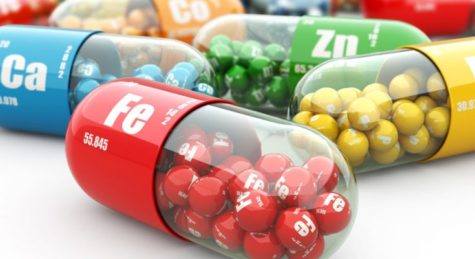
The term ‘ minerals ‘ refers to elements in their simple inorganic form. In nutrition they are commonly referred to as mineral elements or inorganic nutrients. Minerals are vital to health. Like vitamins and amino acids, minerals are essential for regulating and building the trillions of living cells which make up the body. Body cells receive the essential food elements through the blood stream. They must, therefore, be properly nourished with an adequate supply of all the essential minerals for the efficient functioning of the body.
Minerals help maintain the volume of water necessary to life processes in the body. They help draw chemical substances into and out of the cells and they keep the blood and tissue fluid from becoming either too acidic or too alkaline.
The importance of minerals, like vitamins, is illustrated by the fact that there are over 50,000 enzymes in the body which direct growth and energy and each enzyme has minerals and vitamins associated with it. Each of the essential food minerals does a specific job in the body and some of them do extra work, in teams, to keep body cells healthy.
The mineral elements which are needed by the body in substantial amounts are calcium, phosphorous, iron, sulfur, magnesium, sodium, potassium and chlorine. In addition the body needs minute (trace) amounts of iodine, copper, cobalt, manganese, zinc, selenium, silicon, fluorine and some others.
-
Calcium
The human body needs calcium more than any other mineral. A man weighing 70 kg. contains one kg. of calcium. About 99 per cent of the quantity in the body is used for building strong bones and teeth and the remaining one per cent is used by the blood, muscles and nerves.
Calcium performs many important functions. Without this mineral , the contractions of the heart would be faulty, the muscles would not contract properly to make the limbs move and blood would not clot. Calcium stimulates enzymes in the digestive process and coordinates the functions of all other minerals in the body.
Calcium is found in milk and milk products, whole wheat, leafy vegetables such as lettuce, spinach, and cabbage , carrots, watercress, oranges, lemons, almonds, figs and walnuts. A daily intake of about 0.4 to 0.6 grams of calcium is considered desirable for an adult. The requirement is larger for growing children and pregnant and lactating women.
Deficiency may cause porous and fragile bones, tooth decay, heart palpitations, muscle cramps, insomnia and irritability. A large increase in the dietary supply of calcium is needed in tetany and when the bones are decalcified due to poor calcium absorption, as in rickets, oesteomalacia and the mal-absorption syndrome. Liberal quantity of calcium is also necessary when excessive calcium has been lost from the body as in hyperparathyroidism or chronic renal disease.
-
Phosphorus
It combines with calcium to create the calcium-phorphorus balance necessary for the growth of bones and teeth and in the formation of nerve cells. This mineral is also essential for the assimilation of carbohydrates and fats. It is a stimulant to the nerves and brain. Phosphorous is found in abundance in cereals, pulses, nuts, egg yolk, fruit juices, milk and legumes. Usually about one gram of phosphorous is considered necessary in the daily diet.
A phosphorous deficiency may bring about loss of weight, retarded growth, reduced sexual powers and general weakness. It may result in poor mineralization of bones, deficient nerve and brain function.
While taking calcium in therapeutic doses for calcium deficiency conditions or for treating ailments, it is advisable to take the calcium supplement in which phosphorous has been added in the correct proportions. This is necessary as calcium cannot achieve its objectives unless phosphorous is present in a proper balance.
-
Iron
Iron is an important mineral which enters into the vital activity of the blood and glands. Iron exists chiefly as hemoglobin in the blood. It distributes the oxygen inhaled into the lungs to all the cells. It is the master mineral which creates warms, vitality and stamina. It is required for the healthy complexion and for building up resistance in the body.
The chief sources of iron are grapes, raisins, spinach, all green vegetables, whole grain, cereals, dried beans, dark colored fruits, beets, dates, liver and egg yolk. The Indian Council of Medical Research has recommended an allowance of 20 to 30 mg. of iron in a balanced diet for an adult.
Iron deficiency is generally caused by severe blood loss,malnutrition , infections and by excessive use of drugs and chemicals. Deficiency of dietary iron may cause nutritional-anemia, lowered resistance to disease, a general run down condition, pale complexion, shortness of breath on manual exertion and loss of interest in sex.
Iron is the classic remedy for anemia. However, there are several forms of anemia, and iron deficiency anemia is only one. If one is taking iron pills due to insufficient intake of iron in the normal diet, one should also take at least 40 mg. of folic acid or folate every day, along with 10 to 25 mg. of vitamin B12. Both these vitamins are essential in building healthy blood cells.
-
Sulphur
All living matter contains some sulphur; this element is therefore essential for life. The greater part of the sulphur in the human body is present in the two sulphur-containing amino acids, methionine and cysteine, or in the double form of the latter cystine.
The main purpose of sulphur is to dissolve waste materials. It helps to eject some of the waste and poisons from the system. It helps keep the skin clear of blemishes and makes hair glossy. It is also valuable in rheumatic conditions.
The main sulphur-containing foods are radishes, carrots, cabbage, cheese, dried beans, fish and eggs. There is no recommended dietary allowance. But a diet sufficient in protein will generally be adequate in sulphur.
Deficiency of sulphur may cause eczema and imperfect development of hair and nails. Sulphur creams and ointments have been remarkably successful in treating a variety of skin problems.
-
Magnesium
All human tissues contain small amounts of magnesium. The adult human body contains about 25 gms. of this mineral. The greater part of this amount is present in bones in combination with phosphate and carbonate. Bone ashes contain less than one per cent magnesium. About one-fifty of the total magnesium in the body is present in the soft tissues, where it is mainly bound to protein.
Next to potassium, magnesium is the predominant metallic action in living cells. The bones seem to provide a reserve supply of this mineral in case of shortage elsewhere in the body. Biochemists call magnesium the “cool, alkaline, refreshing, sleep-promoting mineral”. Magnesium helps one keep calm and cool during the sweltering summer months. It aids in keeping nerves relaxed and normally balanced. It is necessary for all muscular activity.
This mineral is in activator for most of the enzyme system involving carbohydrate, fat and protein in energy-producing reactions. It is involved in the production of lecithin which prevents building up of cholesterol and consequent atherosclerosis. Magnesium promotes a healthier cardiovascular system and aids in fighting depression. It helps prevent calcium deposits in kidneys and gallstones and also brings relief from indigestion.
Magnesium is widely distributed in foods. It is a part of the chlorophyll in green vegetables. Other good sources of this mineral are nuts, soy beans, alfalfa, apples, figs, lemons, peaches, almonds, whole grains, brown rice, sunflower seeds and sesame seeds.
The recommended dietary allowances for magnesium are 350 mg. per day for adult man, 300 mg. for women and 450 mg. during pregnancy and lactation.
Deficiency can lead to kidney damage and kidney stones, muscle cramps, arteriosclerosis, heart attack, epileptic seizures, nervous irritability, marked depression and confusion, impaired protein metabolism and premature wrinkles. Chronic alcoholics often show a low plasma magnesium concentration and a high urinary output. They may, therefore, require magnesium therapy especially in an acute attack of delirium tremens.
Magnesium has also proved useful in bladder and urinary problems and in epileptic seizure. This mineral together with vitamin B6 or pyridoxine has also been found effective in the prevention and treatment of kidney stones. Magnesium can be taken in therapeutic doses up to 700 mg. a day.
-
Sodium
Sodium Chloride , the chemical name for common salt, contains 39 per cent of sodium, an element which never occurs in free form in nature. It is found in an associated form with many minerals especially in plentiful amounts with chlorine. The body of a healthy person weighing about 65 kg. contains 256 g. of sodium chloride. Of this the major part, just over half, is in the extra-cellular fluid. About 96 g. is in bone and less than 32 g. in the cells.
Sodium is the most abundant chemical in the extra-cellular fluid of the body. It acts with other electrolytes, especially potassium, in the intracellular fluid, to regulate the osmotic pressure and maintain a proper water balance within the body. It is a major factor in maintaining acid-base equilibrium, in transmitting nerve impulses, and in relaxing muscles. It is also required for glucose absorption and for the transport of other nutrients across cell membranes.
Sodium can help prevent catarrh. It promotes a clear brain, resulting in a better disposition and less mental fatigue. Because of its influence on calcium, sodium can also help dissolve any stones forming within the body. It is also essential for the production of hydrochloric acid in the stomach and plays a part in many other glandular secretions.
There is some natural salt in every food we eat. Vegetable foods rich in sodium are celery, cucumbers, watermelon, lemons, oranges, grapefruit, beet-tops, cabbage, lettuce, corn, lady’s fingers, apple, berries, pears, squash, pumpkin, peaches, lentils, almonds and walnuts. Animal food sources include shell fish, lean beef, kidney, bacon and cheese.
The sodium chloride requirements for persons living in the tropics have been estimated at 10 to 15 g. per day for adults who are engaged in light work and 15 to 20 g. for those engaged in hard work. The requirements of children are from five to 10 g. and those for adolescent boys and girls from 10 to 25 g.
Both deficiency and excess of salt may produce adverse effects o the human body. Deficiencies of sodium are, however, rare and may be caused by excessive sweating, prolonged use of diuretics, or chronic diarrhea. Deficiency may lead to nausea, muscular weakness, heat exhaustion, mental apathy and respiratory failure.
Over-supply of sodium is a more common problem because of overuse of dietary sodium chloride or common salt. Too much sodium may lead to water retention, high blood pressure, stomach ulcers, stomach cancer, hardening of arteries and heart disease.
In case of mild deficiency of sodium chloride, taking a teaspoon of common salt in one half liter of water or any fruit juice quickly restores the health. In severe conditions, however, administration of sodium chloride in the form of normal saline by intravenous drip may be restored to.
The adverse effects of excessive use of sodium chloride can be rectified by avoiding the use of common salt.
-
Potassium
Potassium is essential to the life of every cell of a living being and is among the most generously and widely distributed of all the tissue minerals. It is found principally in the intracellular fluid where it plays an important role as a catalyst in energy metabolism and in the synthesis of glycogen and protein. The average adult human body contains 120 g. as potassium and 245 g. as potassium chloride. Out of this body potassium, 117 g. is found in the cells and 3 g. in the extracellular compartment.
Potassium is important as an alkalizing agent in keeping a proper acid-alkaline balance in the blood and tissues. It is essential for muscle contraction and therefore, important for proper heart function. It promotes the secretion of hormones and helps the kidneys in detoxification of blood. Potassium prevents female disorders by stimulating the endocrine hormone production. It is involved in the proper functioning of the nervous system and helps overcome fatigue. It also aids in clear thinking by sending oxygen to the brain and assists in reducing blood pressure.
Potassium is widely distributed in foods. All vegetables, especially green, leafy vegetables, grapes, oranges, lemons, raisins, whole grains, lentils, sunflower seeds, nuts, milk, cottage cheese and butter milk are rich sources. Potatoes, especial potato peelings, and bananas are especially good sources. Potassium requirements have not been established but on intake of 0.8 to 1.3 g. per day is estimated as approximately the minimum need.
Potassium deficiency may occur during gastrointestinal disturbances with severe vomiting and diarrhea, diabetic acidosis and potassium-losing nephritis. It causes undue nervous and body tiredness, palpitation of the heart, cloudiness of the mind, nervous shaking of the hands and feet, great sensitivity of the nerves to cold, and excessive perspiration of the feet and hands.
In simple cases of potassium deficiency, drinking plenty of tender coconut water daily, can make up for it. It is advisable to consume plenty of figs, apricots, prunes, almonds and tomatoes during the use of oral diuretics. Potassium-rich foods should be restricted during acute renal failure and Addison’s disease.
-
Chlorine
In the human body, chlorine is liberated by the interaction of common salt, taken along with food, and hydrochloric acid liberated in the stomach during the process of digestion. It is essential for the proper distribution of carbon dixoxide and the maintenance of osmotic pressure in the tissues.
This food element is necessary for the manufacture of glandular hormone secretions. It prevents the building of excessive fat and auto-intoxication. Chlorine regulates the blood’s alkaline -acid balance and works with Potassium in a compound form. It aids in the cleaning out of body waste by helping the liver to function.
Chlorine is found in cheese and other milk products, green leafy vegetables, tomatoes, all berries, rice, radishes, lentils, coconuts and egg yolk. No dietary allowance has been established, but an average intake of daily salt will ensure adequate quantity of chlorine. Deficiency of this mineral can cause loss of hair and teeth.
-
Iodine
The chief store-house of iodine in the body is the thyroid gland. The essential thyroxine, which is secreted by this gland, is made by the circulating iodine. Thyroxine is a wonder chemical which controls the basic metabolism and oxygen consumption of tissues. It increases the heart rate as well as urinary calcium excretion. Iodine regulates the rate of energy production and body weight and promotes proper growth. It improves mental alacrity and promotes healthy hair, nails, skin and teeth.
The best dietary sources of iodine are kelp and other seaweeds. Other good sources are turnip greens, garlic, watercress, pineapples, pears, artichokes, citrus fruits, egg yolk and seafood and fish liver oils.
The recommended dietary allowances are 130 mcg. per day for adult males and 100 mcg. per day for adult females. An increase to 125 mcg. per day during pregnancy and to 150 mcg. per day during lactation has been recommended.
Deficiency can cause goiter and enlargement of the thyroid glands. Small doses of iodine are of great value in the prevention of goiter in areas where it is endemic and are of value in treatments, at least in the early stages. Larger doses have a temporary value in the preparation of patients with hyperthyroidism for surgical operation.
-
Copper
There are approximately 75 to 150 mg. of copper in the adult human body. Newborn infants have higher concentrations than adults. Liver, brain, kidney, heart, and hair contain relatively high concentration. Average serum copper levels are higher in adult females than in males. Serum copper levels also increase significantly in women both during pregnancy and when taking oral contraceptives.
This mineral helps in the conversion of iron into hemoglobin. It stimulates the growth of red blood cells. It is also an integral part of certain digestive enzymes. It makes the amino acid tyrosine usable, enabling it to work as the pigmenting factor for hair and skin. It is also essential for the utilization of vitamin C.
Copper is found in most foods containing iron, especially in almonds, dried beans, peas, lentils, whole wheat, prunes and egg yolk. The recommended dietary allowance has not been established but 2 mg. is considered adequate for adults. A copper deficiency may result in bodily weakness, digestive disturbances and impaired respiration.
-
Cobalt
Cobalt is a component of vitamin B12, a nutritional factor necessary for the formation of red blood cells. Recent research in vitamin B12 has shown that its pink color is attributed to the presence of cobalt in it. The presence of this mineral in foods helps the synthesis of hemoglobin and the absorption of food- iron.
The best dietary sources of cobalt are meat, kidney and liver. All green leafy vegetables contain some amount of this mineral. No daily allowance has been set. Only a very small amount up to 8 mcg. is considered necessary.
-
Manganese
The human body contains 30 to 35 mg. of manganese, widely distributed throughout the tissues. It is found in the liver , pancreas, kidney, pituitary glands. This mineral helps nourish the nerves and brain and aids in the coordination of nerve impulses and muscular actions. It helps eliminate fatigue and reduces nervous irritability.
Manganese is found in citrus fruits, the outer covering of nuts, grains, in the green leaves of edible plants, fish and raw egg yolk. No official daily allowance of manganese has been established, but 2.5 to 7 mg. is generally accepted to be the average adult requirement. A deficiency of this mineral can lead to dizziness, poor elasticity in the muscles, confused thinking and poor memory.
-
Zinc
There are about two grams of zinc in the body where it is highly concentrated in the hair, skin, eyes, nails and testes. It is a constituent of many enzymes involved in metabolism. Zinc is a precious mineral.
Our need for this mineral is small but its role in growth and well-being is enormous, starting before birth. It is needed for healthy skin and hair, proper healing of wounds, successful pregnancies and male virility. It plays a vital role in guarding against diseases and infection. It is needed to transport vitamin A to the retina. There are 156 enzymes that require zinc for their functioning. It has long been known that growth and sexual maturity depend on zinc.
The main dietary sources of zinc are milk, liver, beans, meat, whole grains, nuts, and seeds. The recommended dietary allowance of zinc is 15 mg. daily.
Deficiency can result in weight loss, skin diseases, loss of hair, poor appetite, diarrhea and frequent infection. Those suffering from rheumatoid arthritis may have a zinc deficiency. Heavy drinkers lose a lot of zinc in their urine.
-
Selenium
Selenium and vitamin E are synergistic and the two together are stronger than the sum of the equal parts. Selenium slows down ageing and hardening of tissues through oxidation. Males seem to have a greater need for this mineral. Nearly half of the total supply in the body is concentrated in the testicles and in the seminal ducts adjacent to the prostate gland.
Selenium is useful in keeping youthful elasticity in tissues. It alleviates hot flushes and menopausal distress. It also helps in the prevention and treatment of dandruff.
This mineral is found in Brewer’s yeast, garlic, onions, tomatoes, eggs, milk and sea food. There is no official dietary allowance for selenium but, 50 to 100 mcg. is considered adequate. Deficiency of this mineral can cause premature loss of stamina.
-
Silicon
This is known as the ” beauty mineral ” as it is essential for the growth of skin, hair shafts, nails and other outer coverings of the body. It also makes the eyes bright and assists in hardening the enamel of the teeth. It is beneficial in all healing process and protects body against many diseases such as tuberculosis, irritations in mucous membranes and skin disorders.
Silicon is found in apples, cherries, grapes, asparagus, beets, onions, almonds, honey, peanuts and the juices of the green leaves of most other vegetables. No official dietary allowance has been established for this mineral.
Deficiency can lead to soft brittle nails, ageing symptoms of skin such as wrinkles, thinning or loss of hair, poor bone development, insomnia, osteoporosis.
-
Flourine
Fluorine is the element that prevents diseases from decaying the body. It is a germicide, and acts as an antidote to poison, sickness and disease. There is a strong affinity between calcium and fluorine. These two elements, when combined, work particularly in the outer parts of bones. They are found in the enamel of the teeth and the shiny, highly polished bone surface.
Fluorine is found in goat’s milk, cauliflower, watercress, garlic, beets, cabbage, spinach and pistachio nuts.
Minerals Are Important
Minerals thus play an important role in every bodily function and are present in every human cell. Although the amount needed may be small, without even the trace of the mineral, dysfunction is bound to occur at some level in the body. A zinc deficiency may show up in ridged fingernails with white spots. Lack of sulfur can cause lack-luster hair and dull-looking skin. Less obvious deficiencies may surface as fatigue, irritability, loss of memory, nervousness, depression and weakness.
Minerals also interact with vitamins. Magnesium, for instance, must be present in the body for utilization of B-complex, C and E vitamins. Sulfur also works with the B-complex vitamins. The body needs all the trace minerals in proper balance.
Coffee, tea, alcohol, excess salt and many drugs can rob the body of minerals or make them ineffective. Industrial pollutants cause toxic minerals to enter the body. Minerals at toxic levels also have the effect of destroying the usefulness of other vitamins and minerals.
Exercise improves the activity of certain vitamins and minerals while stress and fatigue work against them. A well-balanced diet provides as abundance of minerals and vitamins. In refining cereals, grains and sugar, we have robbed them of their natural vitamins and minerals.
The dietary sources of these nutrients are whole grains, cereals, bran and germ. It is the bran and germ which are removed in processing. To obtain a balance of nutrients, it is, therefore, necessary to avoid refined and processed foods but an intake of adequate green leafy vegetables which are an excellent source of many nutrients should be ensured.
About Healing With Color

Chromotherapy is a method of treatment of diseases by color. It is best used as a supportive therapy along with other natural methods of preserving health such as correct diet, adequate rest and relaxation, exercise, yogic asanas and so on. According to practitioners of chromotherapy, the cause of any disease can be traced to the lack of a particular color in the human system. color therapy is a technique of restoring imbalance by means of applying colored light to the body. It was a popular method of cure even in ancient times.
Some 2,500 years ago, Pythagoras applied color light therapeutically and ‘color halls’ were used for healing in ancient Egypt, China and India. The pioneer of modern color therapy was Niels Finsen of Denmark. Following the discovery, in 1877, of the bactericidal action of solar ultra-violet energy, Finsen studied the possibility of assisting the healing of wounds with visible light. He subsequently used red light to inhibit the formation of smallpox scars and, in 1896, founded a Light Institute ( now the Finsen Institute of Copenhagen) for the phototreatment of tuberculosis.
In 1932, Gerrard and Hessay, two Californian psychologists, scientifically established that blue light had a calming effect and red a stimulating power on human beings. Blue and red colors are considered at the two extremes with yellow representing the midpoint. These are also the three principal colors in a rainbow. A patient is first subjected to an examination to ascertain which color he lacks. The deficiency is determined by observing the color of the eyeballs, nails, urine and excrement. In cases of the lack of red the eyes and nails will be bluish, and the urine and excrement white or bluish. If there is a deficiency of the blue color, the eyes and nails will be reddish and urine and excrement yellowish or red.
Every substance on earth contains color. Even the rays cast on earth by celestial bodies contain color in the form of white light. The rays of the sun contain seven different colors violet, indigo, blue, green, yellow, orange and red. These are natural colors which are highly beneficial to the maintenance of health and for healing diseases.
According to Dr. Babbit, a well-known authority on chromotherapy, “sunlight is the principal curative agent in nature’s laboratory and where light cannot enter, disease does. Chlorosis, anemia, leukemia, emaciation, muscular debility, degeneration of heart and liver, dropsical effusion, softening of bones, nervous excitability, physical deformity, stunted growth and consumption are the result of excluding oneself from the beneficial effects of sunlight.”
Sunlight plays an important role in the recovery from chronic diseases. Judicious use of sunlight can be part of the curing process in almost every affliction. The rays of the sun improve digestion and nutrition, quicken blood and lymph circulation and increase the elimination of impurities through the skin.
The action and effect of various colors on the body:
If this interests you, the Color Therapy site here at shirleytwofeathers.com has a wealth of information on color.
- Red
Symbolic of heat, fire and anger. It is a stimulating and energizing color. It stimulates arterial blood and brings warmth to cool extremities. Used as a general tonic, it is very valuable in the treatment of diseases like low blood pressure, rheumatism, paralysis, anemia and advanced cases of tuberculosis.
- Orange
Symbolic of prosperity and pride, orange is useful for stimulating blood supply and energizing the nerves. It is beneficial in the treatment of kidney and gall stones, hernia and appendicitis. It is also used to stimulate the milk producing action of breasts after childbirth.
- Violet
Violet is beneficial in the treatment of nervous and emotional disturbances, arthritis, acute cases of consumption and insomnia.
- Yellow
Associated with joy and happiness, yellow is laxative and diuretic. It is a stimulant to the brain, the liver and the spleen. It is also effective in the treatment of diabetes, indigestion, kidney and liver disorders, constipation, eye and throat infections, syphilis and impotence.
- Purple
Purple or indigo combines the blood-warming red and the cooling antiseptic blue. It is an excellent stimulant without being an irritant. It is beneficial in the treatment of advanced stages of constipation, hydrocle, leucorrhoea, many disorders of the stomach and womb , cataract , migraine and skin disorders. It exerts a soothing effect on the eyes, ears and the nervous system.
- Green
Made up of the blue and yellow, green is regarded as a color of harmony. It is a mild sedative. It is useful in the treatment of nervous conditions, hay fever, ulcers, influenza, malaria , colds, sexual disorders and cancer. It preserves and strengthens eyesight. Being highly medicinal and depressive, it is of great help in the treatment of inflammatory conditions.
- Blue
Cool, soothing and sedative, blue alleviates pain, reducing bleeding and heals burns. It is beneficial in the treatment of dysentery, colic, asthma, respiratory disorders, high blood pressure and skin aberrations. In a study at the New England State Hospital in the United States, 25 members of staff with normal blood pressure were bathed in blue light for half an hour. It resulted in universal fall in blood pressure. The blood pressure rose when red light was applied.
Methods of Treatment
There are two methods of treating diseases by color : By the application of light through different colored glasses ; and by external or internal use of color-charged water.
In the first method, sheets of glass, 30 cms. X 36 cms. of the required colors are needed. These are placed at the window frames or any other convenient place in such a way that the sun’s rays can pass through them and fall directly on the patient’s body. The usual duration of the color treatment is 30 minutes.
In case of local application, a pane of glass can be placed in front of the diseased part so that the light passing through the glass falls on the afflicted area. At night lanterns can be used for the purpose. A single lantern can have glass panes of four different colors and the required color can be focused on the patient or the affected parts.
In the second method, colored bottles are needed. These bottles should be cleaned and filled up to three-fourths level with fresh well water, distilled water or rain water. The bottles should be corked and then placed in bright sunlight for three to four hours. After this exposure, the water is said to acquire medicinal properties and this color-charged water can be used both internally and for external applications.
Wounds and ulcers can be washed with this water and it can also be used to massage the affected parts or applied as compress on them. For internal use, an adult can take 30 ml. of color-charged water as a single dose. The dose can be repeated as required.
Diet
A correct and balanced diet is essential during the treatment of diseases through chromotherapy. The patients should take food items with analogous coloring. The various colors contained in different food items are :
- Red : Beets, radish, red cabbage, tomatoes, watercress, most red-skinned fruits,red berries and water melon.
- Orange : Orange-skinned vegetables and fruits such as carrot, orange, apricot, mango, peach and papaya.
- Violet : Egg plant, berries, black carrot and purple grapes.
- Yellow : Lime and lemon, sweet lime, grapes, pumpkin, melon, banana, mango, yellow apple and guava.
- Purple : Foods having both blue and violet coloring.
- Green : Most of the green vegetables and fruits such as gourds, spinach, plantain, lettuce, pea, green mango, gooseberry, pears, beans , etc.
- Blue : Blue plum, blue beans, blue grapes, etc.
Contraindications
There are some important contraindications to color treatment which should be borne in mind while adopting this mode of cure. For instance, the red color would be injurious in a naturally inflammatory condition of the system, and in case of persons with feverish and excitable temperament. If the red light is employed for too long and frequently, it may produce dangerous fevers. The danger can be obviated by using the red light for a few minutes at a time or by placing a wet bandage over the head.
Similarly, yellow should not be used when the nerves are very active or irritable. Yellow or orange reddish tones may prove injurious in fevers, acute inflammations, delirium, diarrhea, neuralgia, palpitation of the heart and any condition of over- excitement.
In cases of paralysis, chronic rheumatism, gout, consumption and in all cold, pale and dormant conditions of the system, blue, indigo and violet may prove too cooling and constricting and should be avoided.
Fasting – The Master Remedy

Fasting refers to complete abstinence from food for a short or long period for a specific purpose. The word is derived from the old English, ‘feastan’ which means to fast, observe, be strict. Fasting is nature’s oldest, most effective and yet least expensive method of treating disease. It is recognized as the cornerstone of natural healing. Dr. Arnold Eheret, the originator of the mucus-less diet healing system, describes it as ” nature’s only universal and omnipotent remedy of healing” and “nature’s only fundamental law of all healing and curing. ”
The practice of fasting is one of the most ancient customs. It is followed in almost every religion. The Mohammedan, the Buddhists, the Hindus and many others have their periods of strict fasting. The saints of medieval times laid great stress on this method.
Fasting in disease was advocated by the school of natural philosopher, Asclepiades, more than two thousand years ago. Throughout medical history, it has been regarded as one of the most dependable curative methods. Hippocrates, Galen, Paracelsus and many other great authorities on medicine prescribed it. Many noted modern physicians have successfully employed this system of healing in the treatment of numerous diseases.
The common cause of all diseases is the accumulation of waste and poisonous matter in the body which results from overeating. The majority of persons eat too much and follow sedentary occupations which do not permit sufficient and proper exercise for utilization of this large quantity of food. This surplus overburdens the digestive and assimilative organs and clogs up the system with impurities or poisons. Digestion and elimination become slow and the functional activity of the whole system gets deranged.
The onset of disease is merely the process of ridding the system of these impurities. Every disease can be healed by only one remedy – by doing just the opposite of what causes it, that is, by reducing the food intake or fasting.
By depriving the body of food for a time ,the organs of elimination such as the bowels, kidneys, skin and lungs are given opportunity to expel, unhampered, the overload of accumulated waste from the system. Thus, fasting is merely the process of purification and an effective and quick method of cure. It assists nature in her continuous effort to expel foreign matter and disease producing waste from the body, thereby correcting the faults of improper diet and wrong living. It also leads to regeneration of the blood as well as the repair and regeneration of the various tissues of the body.
Duration
The duration of the fast depends upon the age of the patient, the nature of the disease and the amount and type of drugs previously used. The duration is important, because long periods of fasting can be dangerous if undertaken without competent professional guidance. It is, therefore, advisable to undertake a series of short fasts of two to three days and gradually increase the duration of each succeeding fast by a day or so.
The period, however, should not exceed a week of total fasting at a time. This will enable the chronically sick body to gradually and slowly eliminate toxic waste matter without seriously affecting the natural functioning of the body. A correct mode of living and a balanced diet after the fast will restore vigor and vitality to the individual.
Fasting is highly beneficial in practically all kinds of stomach and intestinal disorders and in serious conditions of the kidneys and liver. It is a miracle cure for eczema and other skin diseases and offers the only hope of permanent cure in many cases. The various nervous disorders also respond favorably to this mode of treatment.
Fasting should, however, not be restored to in every illness. In cases of diabetes, advanced stages of tuberculosis, and extreme cases of neurasthenia, long fasts will be harmful. IN most cases, however , no harm will accrue to fasting patients, provided they take rest, and are under proper professional care.
Fasting – Methods
The best, safest and most effective method of fasting is juice fasting. Although the old classic form of fasting was a pure water fast, most of the leading authorities on fasting today agree that juice fasting is far superior to a water fast.
According to Dr. Rangar Berg, the world -famous authority on nutrition, “During fasting the body burns up and excretes huge amounts of accumulated wastes. We can help this cleansing process by drinking alkaline juice instead of water while fasting … Elimination of uric acid and other inorganic acids will be accelerated. And sugars in juices will strengthen the heart … juice fasting is, therefore, the best form of fasting. ”
Vitamins, minerals, enzymes and trace elements in fresh, raw vegetable and fruit juices are extremely beneficial in normalizing all the body processes. They supply essential elements for the body’s own healing activity and cell regeneration and thus speeding the recovery. All juices should be prepared from fresh fruit immediately before drinking. Canned or frozen juices should not be used.
A precautionary measure which must be observed in all cases of fasting is the complete emptying of the bowels at the beginning of the fast by enema so that the patient is not bothered by gas or decomposing matter formed from the excrement remaining in the body. Enemas should be administered at least every alternate day during the fasting period. The patient should get as much fresh air as possible and should drink plain lukewarm water when thirsty. Fresh juices may be diluted with pure water. The total liquid intake should be approximately six to eight glasses.
A lot of energy is spent during the fast in the process of eliminating accumulated poisons and toxic waste materials. It is, therefore, of utmost importance that the patients gets as much physical rest and mental relaxation as possible during the fast. In cases of fasts in which fruit juices are taken, especially when fresh grapes, oranges or grapefruit are used exclusively, the toxic wastes enter the blood -stream rapidly, resulting in an overload of toxic matter, which affects normal bodily functions. This often results in dizzy spells, followed by diarrhea and vomiting. If this physical reaction persists, it is advisable to discontinue the fast and take cooked vegetables containing adequate roughage such as spinach and beets until the body functioning returns to normal.
The overweight person finds it much easier to go without food. Loss of weight causes no fear and the patient’s attitude makes fasting almost a pleasure. The first day’s hunger pangs are perhaps the most difficult to bear. The craving for food will, however, gradually decrease as the fast progresses. Seriously sick persons have no desire for food and fasting comes naturally to them. The simplest rule is to stop eating until the appetite returns or until one feels completely well.
Only very simple exercises like short walks may be undertaken during the fast. A warm water or neutral bath may be taken during the period. Cold baths are not advisable. Sun and air baths should be taken daily. Fasting sometimes produces a state of sleeplessness which can be overcome by a warm tub bath, hot water bottles at the feet and by drinking one or two glasses of hot water.
Benefits
There are several benefit of fasting. During a long fast, the body feeds upon its reserves. Being deprived of needed nutrients, particularly of protein and fats, it will burn and digest its own tissues by the process of autolysis or self-digestion. But it will not do so indiscriminately. The body will first decompose and burn those cells and tissues which are diseased, damaged, aged or dead. The essential tissues and vital organs, the glands, the nervous system and the brain are not damaged or digested in fasting.
Here lies the secret of the effectiveness of fasting as a curative and rejuvenative method. During fasting, the building of new and healthy cells are sped up by the amino acids released from the diseased cells. The capacity of the eliminative organs, that is, lungs, liver, kidneys and the skin is greatly increased as they are relieved of the usual burden of digesting food and eliminating the resultant wastes. They are, therefore, able to quickly expel old accumulated wastes and toxins.
Fasting affords a physiological rest to the digestive, assimilative and protective organs. As a result, the digestion of food and the utilization of nutrients is greatly improved after fasting. The fast also exerts a normalizing, stabilizing and rejuvenating effect on all the vital physiological, nervous and mental functions.
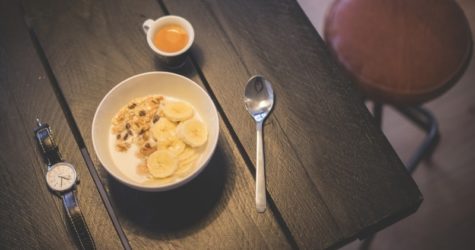
Breaking the Fast
The success of the fast depends largely on how it is broken. This is the most significant phase. The main rules for breaking the fast are: do not overeat, eat slowly and chew your food thoroughly; and take several days for the gradual change to the normal diet. If the transition to eating solid foods is carefully planned, there will be no discomfort or damage. The patient should also continue to take rest during the transition period. The right food after a fast is as important and decisive for proper results as the fast itself.
About Naturopathic Medicine
Nature Cures, not the Physician.
– Hippocrates
Principles and Practice
Natural medicine, or naturopathy, is a constructive method of treatment which aims at removing the basic cause of disease through the rational use of the elements freely available in nature. It is not only a system of healing, but also a way of life, in tune with the internal vital forces or natural elements comprising the human body. It is a complete revolution in the art and science of living.
Although the term ‘ naturopathy’ is of relatively recent origin, the philosophical basis and several of the methods of nature cure treatments are ancient. It was practiced in ancient Egypt, Greece and Rome. Hippocrates, the father of medicine ( 460-357 B.C.) strongly advocated it. India, it appears, was much further advanced in older days in natural healing system than other countries of the world. There are references in India’s ancient sacred books about the extensive use of nature’s excellent healing agents such as air, earth, water and sun. The Great Baths of the Indus Valley civilization as discovered at Mohenjodaro in old Sind testifies to the use of water for curative purposes in ancient India.
The modern methods of natural healing originated in Germany in 1822, when Vincent Priessnitz established the first hydropathic establishment there. With his great success in water cure, the idea of drugless healing spread throughout the civilized world and many medical practitioners throughout the civilized world and many medical practitioners from America and other countries became his enthusiastic students and disciples. These students subsequently enlarged and developed the various methods of natural healing in their own way. The whole mass of knowledge was later collected under one name, Naturopathy. The credit for the name Naturopathy goes to Dr. Benedict Lust ( 1872 – 1945), and hence he is called the Father of Naturopathy.
Natural medicine is based on the realization that man is born healthy and strong and that he can stay as such as living in accordance with the laws of nature. Even if born with some inherited affliction, the individual can eliminate it by putting to the best use the natural agents of healing. Fresh air, sunshine, a proper diet, exercise, scientific relaxation, constructive thinking and the right mental attitude, along with prayer and meditation all play their part in keeping a sound mind in a sound body.
Natural medicine believes that disease is an abnormal condition of the body resulting from the violation of the natural laws. Every such violation has repercussions on the human system in the shape of lowered vitality, irregularities of the blood and lymph and the accumulation of waste matter and toxins. Thus, through a faulty diet it is not the digestive system alone which is adversely affected. When toxins accumulate, other organs such as the bowels, kidneys, skin and lungs are overworked and cannot get rid of these harmful substances as quickly as they are produced.
Besides this, mental and emotional disturbances cause imbalances of the vital electric field within which cell metabolism takes place, producing toxins. When the soil of this electric filed is undisturbed, disease-causing germs can live in it without multiplying or producing toxins. It is only when it is disturbed or when the blood is polluted with toxic waste that the germs multiply and become harmful.
Basic Principles
The whole philosophy and practice of natural medicine is built on three basic principles. These principles are based on the conclusions reached from over a century of effective naturopathic treatment of diseases in Germany, America and Great Britain. They have been tested and proved over and over again by the results obtained.
The first and most basic principle of natural medicine is that all forms of disease are due to the same cause, namely, the accumulations of waste materials and bodily refuse in the system. These waste materials in the healthy individual are removed from the system through the organs of elimination. But in the diseased person, they are steadily piling up in the body through years of faulty habits of living such as wrong feeding, improper care of the body and habits contributing to enervation and nervous exhaustion such as worry, overwork and excesses of all kinds. It follows from this basic principle that the only way to cure disease is to employ methods which will enable the system to throw off these toxic accumulations. All natural treatments are actually directed towards this end.
The second basic principle of natural medicine is that all acute diseases such as fevers, colds, inflammations, digestive disturbances and skin eruptions are nothing more than self-initiated efforts on the part of the body to throw off the accumulated waste materials and that all chronic diseases such as heart disease, diabetes, rheumatism, asthma, kidney disorders, are the results of continued suppression of the acute diseases through harmful methods such as drugs, vaccines, narcotics and gland extracts.
The third principle of natural medicine is that the body contains an elaborate healing mechanism which has the power to bring about a return to normal condition of health, provided right methods are employed to enable it to do so. In other words, the power to cure disease lies within the body itself and not in the hands of the doctor.
Nature Cure vs Modern System
The modern medical system treats the symptoms and suppresses the disease but does little to ascertain the real cause. Toxic drugs which may suppress or relieve some ailments usually have harmful side-effects. Drugs usually hinder the self-healing efforts of the body and make recovery more difficult.
According to the late Sir William Osler, an eminent physician and surgeon, when drugs are used, the patient has to recover twice – once from the illness, and once from the drug. Drugs cannot cure diseases; disease continues. It is only its pattern that changes. Drugs also produce dietary deficiencies by destroying nutrients, using them up, and preventing their absorption. Moreover, the toxicity they produce occurs at a time when the body is least capable of coping with it. The power to restore health thus lies not in drugs, but in nature.
The approach of modern system is more on combative lines after the disease has set in, whereas the naturopathic system lays greater emphasis on preventive method and adopts measures to attain and maintain health and prevent disease. The modern medical system treats each disease as a separate entity, requiring specific drug for its cure, whereas the naturopathic system treats the organism as a whole and seeks to restore harmony to the whole of the patient’s being.
Methods of Naturopathy
Natural medicine aims at the readjustment of the human system from abnormal to normal conditions and functions, and adopts methods of cure which are in conformity with the constructive principles of nature. Such methods remove from the system the accumulation of toxic matter and poisons without in any way injuring the vital organs of the body. They also stimulate the organs of elimination and purification to better functioning.
To cure disease, the first and foremost requirement is to regulate the diet. To get rid of accumulated toxins and restore the equilibrium of the system, it is desirable to completely exclude acid-forming foods, including proteins, starches and fats, for a week or more and to confine the diet to fresh fruits which will disinfect the stomach and alimentary canal. If the body is overloaded with morbid matter, as in acute disease, a complete fast for a few days may be necessary for the elimination of toxins. Fruit juice may, however, be taken during a fast.
- A simple rule:
Do not eat when you are sick, stick to a light diet of fresh fruits. Wait for the return of the usual healthy appetite. Loss of appetite is Nature’s warning that no burden should be placed on the digestive organs. Alkaline foods such as raw vegetables and sprouted whole grain cereals may be added after a week of a fruits-only diet.
Another important factor in the cure of diseases by natural methods is to stimulate the vitality of the body. This can be achieved by using water in various ways and at varying temperatures in the form of packs or baths. The application of cold water, especially to the abdomen, the seat of most diseases, and to the sexual organs, through a cold sitting ( hip) bath immediately lowers body heat and stimulates the nervous system. In the form of wet packs, hydrotherapy offers a simple natural method of abating fevers and reducing pain and inflammation without any harmful side-effects. Warm water applications, on the other hand, are relaxing.
Other natural methods useful in the cure of diseases are air and sunbaths, exercise and massage. Air and sunbaths revive dead skin and help maintain it in a normal condition. Exercise, especially yogic asanas, promotes inner health and harmony and helps eliminate all tension: physical, mental and emotional. Massage tones up the nervous system and quickens blood circulation and the metabolic process.
Thus a well-balanced diet, sufficient physical exercise, the observation of the other laws of well-being such as fresh air, plenty of sunlight, pure drinking water, scrupulous cleanliness, adequate rest and right mental attitude can ensure proper health and prevent disease.

